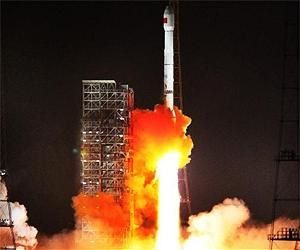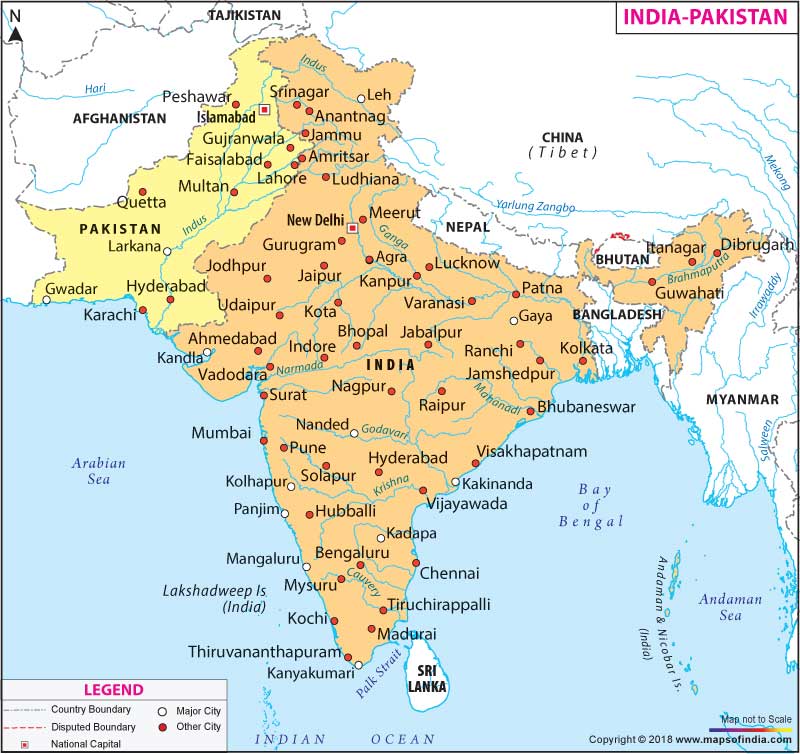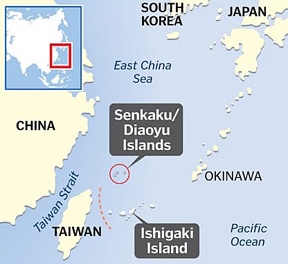
11.01.2013 par SITTA
La 9ème édition du salon AIRSHOW CHINA s’est déroulée du 13 au 18 novembre 2012 à ZHUHAI province de GUANGDONG. Ce salon a rassemblé 650 exposants de 39 pays différents sur 28200m2 ainsi que 80
aéronefs chinois et étrangers. Le groupe AVIC (Aviation Industry Corporation of China) et le consortium CASIC (China Aerospace Science & Industry Corporation) ont occupé plus de la
moitié de la surface disponible pour présenter les dernières nouveautés techniques dans les domaines de l’espace, de l’aéronautique civile et militaire, la défense sol-air, les missiles
balistiques. Le hall principal quand à lui, était majoritairement dédié aux exposants étrangers parmi lesquels la France avec les groupes SAFRAN, EADS, GIFAS, la Russie, l’Ukraine, les USA et
l’Italie. Plus de 300000 visiteurs professionnels et tous publics ont fait le déplacement pour assister aux démonstrations aériennes quotidiennes et visiter les stands. Une trentaine de
délégations étrangères se sont déplacées pour s’informer des dernières technologies chinoises et internationales. Enfin cette 9eme édition a vu de nombreux contrats et partenariats dans
le domaine de l’aviation civile entre des firmes internationales et le gouvernement chinois.
Parmi les nombreux matériels et équipements présentés lors de cette édition il convient de souligner :
- La présentation de la maquette de l’avion de combat multirôles du groupe chinois AVIC
- Les présentations dynamiques de l’hélicoptère de combat Z10 de la société chinoise Changhe Aircraft Industries et Z19 de la société chinoise Harbin Aircraft Industrrial Corporation
- L’équipement optronique LOONG EYE IEO Turner du groupe chinois AVIC
- La présentation statique du drone LOONG WING 01 du groupe chinois AVIC
- La reproduction pleine échelle de l’engin spatial Tiangong-1 arrimé au vaisseau habité Shenzhou-IX
- Le véhicule transport de troupe MRAP CS/VP3 de la compagnie chinoise China South Industries group Corp
- Système de défense sol-air FD 2000 du consortium chinois CASIC.
Z10A (CAIC)
La société Changhe Aircraft Industries Corporation présentait, en avant-première et en démonstration dynamique, le nouvel hélicoptère d'attaque chinois
Z10A.
Z10A
Développé depuis le début des années 1990, cet hélicoptère est le premier appareil d'attaque moyen tonnage produit par la Chine. Il dispose d'un poste de pilotage en tandem, d'une autoprotection
électronique partielle, de deux demi-voilures accueillant chacune deux points d’emports d'armement, d'un canon monté en tourelle sous l'avant de la cabine et de dispositifs optroniques destinés à
la navigation et à l'emploi de l'armement principalement constitué de roquettes et de missiles air/sol de dernière génération.
Hélicoptère de la classe des 5 tonnes doté d’une capacité de combat "tous temps", il est entré en service dans les forces terrestres chinoises à partir du mois de décembre 2010.
Stealth Fighter(AVIC)
La principale nouveauté d'AVICInternational Holding Corporation au salon Zhuhai 2012 était la présentation de la
maquette du futur avion multi-rôle chinois. Annoncé comme le nouveau concept d'avion furtif de quatrième génération chinois, cet appareil serait plutôt prédestiné au marché de défense
international. Cette maquette concède toutefois une ressemblance troublante avec le chasseur immatriculé "31001" observé à l'usine Shenyang Aircraft factury en octobre
dernier.
Stealth Fighter
19W (HARBIN)
Présenté officiellement et exclusivement en présentation dynamique lors de la deuxième journée "grand Public", le Z19W de la société
HARBINAircraft Manufacturing Corporation est la dernière évolution de l'hélicoptère multi-missions Z9W. Contrairement
à ses prédécesseurs, il dispose d'une cabine en tandem et de deux voilures de supports d'armement. Appareil plus léger et compact que le Z10A, le
Z19W serait employé pour des missions de reconnaissance ou d'appui-protection.
Z19W
Loong Eye-I EO Turret(AVIC)
Les hélicoptères Z9W de l'armée de Terre chinoise sont équipés du dispositif optronique Loong Eye-I EO Turret d'AVICInternational
Holding Corporation. Ce Système offre la capacité de navigation, d’observation, de désignation, de guidage et de tir dans le visible et dans l’infrarouge ainsi qu’une télémétrie, un
désignateur et un pointeur laser.
Loong Eye-I EO Turret
Système Wing-loong 1 (AVIC)
Le drone Wing-loong 1 était présenté en situation statique extérieure. Equipé d’un dispositif électro-optique ventral, il permet la recherche, la localisation, la
transmission d’informations de sites terrestres hors d’observation de ses opérateurs. Il dispose également de deux points d'emport d'armement sous voilure permettant la destruction d'objectifs
terrestres.
Sa masse totale au décollage est de 1 200 kg, incluant 200 kg de charges militaires (bombes, missiles) et 275 kg de carburant. D’une envergure de 14 m pour une longueur de 9 m et une hauteur de
2,7 m, sa vitesse de vol maximale est de 280 km/h pour une autonomie totale de plus de 20 heures et une altitude maximale de 7 000m.
Wing-loong 1
C312 (Avicopter)
La société AVICInternational Holding Corporationprésentait la dernière version civile de l'AC312. C’est la première
fois que cet appareil est observé avec tous les systèmes nécessaires aux missions de "Recherche et Sauvetage" (SAR – Search And Rescue).
Cet hélicoptère, d’une masse totale au décollage 4 250 kg, est équipé de deux moteurs Arriel 2C de Turbomécadéveloppant plus de 2 x 800 hp au décollage. Il peut emporter
jusqu'à 1 600 kg de charges utiles combinées à 900 kg de carburant. Sa voilure est constituée d'un rotor principal à quatre pales et d’un dispositif anticouple arrière de type fenestron.
AC312
Les équipements principaux de l'AC312en version SAR se composent :
● d’un dispositif optronique PLY-2 de CAMA Measurements & Controls Co.ltd;
● d'un phare de recherche SX-16 NightSun de Septrolab;
● de haut-parleurs TS92-02XN de Northern Airborne Technology;
● d'un dispositif de transport sous élingue S1609-E d'Indraero Siren Equip;
● d'un treuil Model 44301-10-9 de Goodrich.
CS/VP3(China South Industries)
L’importance du salon ne cesse de s’accroitre et cette neuvième édition accueille pour la première fois le très grand groupe China South Industriesqui présente une gamme
diversifiée d’engins, bombes de démolition aéro-larguées, véhicules blindés de défense sol-air et au-delà du domaine aéronautique plusieurs véhicules blindés de transport de troupe dont le
CS/VP3 conçu autour d’un châssis en V caractéristique des engin de type MRAP (Mine Resistant Ambush-Protected Vehicle), il protège ses occupants des effets des mines et
des armes de petit calibre, les vitres pare-balles sont dotées d’un orifice de tir. D’abord conçu pour le transport de troupes et de matériel vers le front, il est très facilement adaptable à des
missions de secours ou de maintien de l’ordre.
MRAP CS/VP3
SharpEye (Wangjiang Industry)
L’extension des zones d’exposition permet d’accueillir d’autres engins volumineux comme le système SharpEye de la compagnie Wangjiang Industry
qui intègre en un même véhicule, le stockage, le transport, le système de lancement par catapulte et le poste de contrôle pour 3 drones de 115 kg récupérables par parachute et ballon. Ils peuvent
assurer pendant plus de 4 heures à tour de rôle des missions de reconnaissance du champ de bataille de jour comme de nuit dans un rayon d’une centaine de kilomètres jusqu’au plafond de 5000m, en
embarquant une charge utile de 20kg.
Système SharpEye
La Casc du domaine spatial aux Missiles
La CASC (China Aerospace Science and Technology Corporation) qui forme un consortium d’entreprise d’états, fort de plusieurs académies de recherche de premier plan et de
plusieurs dizaines entreprises, dispose naturellement d’un espace conséquent. Le groupe profite d’un hall entier, très largement occupé par la maquette pleine échelle du laboratoire orbital
expérimental Tiangong-1, accouplé au vaisseau habité Shenzhou-9, pour célébrer la venue des 3 membres d’équipage dont la pilote Liu Yang, première femme
Chinoise en orbite. Les applications satellites présentées mettent en avant les services à l’export. Le système de navigation Beidou en passe d’offrir un service de
positionnement global dans toute l’Asie dès l’an prochain, qui sera étendu au niveau mondial avant 2020. La réception et le traitement de données de météorologie ou d’observation de la terre. Le
premier satellite d’observation VRSS1 exporté par la Chine avec l’infrastructure associée qui permet au Venezuelaune complète autonomie de la prise de vue à la
diffusion des images. Mais à la future plateforme DFH5 dont l’ébauche était aperçue en 2010 sont préférés les satellites de télécommunications DFH 3 et 4 vendus au
Pakistan, Venezuela et Nigéria. La compagnie de la grande muraille (CGWIC), une filiale commerciale du groupe, signera d’ailleurs durant le salon un accord
de vente d’un système complet de télécommunication géostationnaire avec la République démocratique du Congo, dont le satellite sera délivré en orbite dans moins de trois ans.
Satellites d’application de la CASC
Les maquettes de la gamme de lanceurs longue marche 2, 3 et 4 et la série longue marche 5 toujours attendue pour un premier lancement en 2014, depuis le nouveau
centre spatial de Wenchang prennent, grande place au coté d’un autre vecteur de prestige qu’est le programme d’exploration lunaire. Le lancement en 2013 de la troisième mission
Chang’E initiera la deuxième phase du projet, il s’agira cette fois de se poser en douceur de afin de débarquer un véhicule d’exploration à six roues. Ce rover
autonome évitera les obstacles et sélectionnera les endroits propices pour en examiner la surface et le sous-sol, avec des capteurs optiques et radars, des échantillons seront prélevés. Après
avoir complètement réalisé sa mission lunaire jusqu’en juin 2011, plutôt que de l’y écraser délibérément comme la première, la seconde sonde Chang’E II rejoignait en août 2011
les alentours du point stable terre-soleil, Lagrange L2 à 1,5 millions de la terre, pour y attendre le prochain passage de l’astéroïde géo-croiseur Toutatis au plus proche de la terre le 12
décembre 2012, puis de Chang’E II le jour suivant.
Première et seconde phase du programme lunaire Chang’E
CAST 50, 100 et 150
La nouvelle entité de recherche et de développement, Aerospace Dongfanghong ltd. de Shenzhen, pourtant fondée il y a moins de quatre ans, à déjà abouti à trois
nouvelles plateformes satellites, CAST 50, 100 et 150. Le modèle d’ingénierie exposé est proche du satellite de démonstration technologique qui sera lancé avant fin novembre, son
bus de 110kg accepte des charges utiles à expérimenter de 50 à 70 kg. L’objectif de devenir un leader parmi les producteurs mondiaux de microsatellites, se concrétise par une usine d’assemblage
de 46000 m² qui sera opérationnelle en fin d’année 2012, la cadence de production annuelle atteindra 8 à 10 satellites à l’horizon 2015.
Permier microsatellite de la série CAST-150
Majoritairement engagée dans la conception la fabrication et le lancement des systèmes spatiaux, la CASC produit néanmoins du matériel plus militaire et s'emploie activement à
rechercher de d’autres opportunités d'exportation au travers de son autre filiale commerciale ALIT (China Aerospace longue-marche International).
CH4 - A&B (CASC - ALIT)
ALIT présente le drone de moyenne altitude et de longue endurance(MALE) CH4-A, qui pourra être doté en fonction du souhait de ses clients d’une combinaison de
caméras électro-optiques et infrarouges, de laser de mesure ou de désignation de cible, servir de relai de télécommunications, ou être équipé d’un radar à synthèse d’ouverture. Une version
CH4-B d’apparence similaire peut servir à des missions de combat en emportant jusqu’à 4 bombes guidées de précision (de l’ordre 60kg chacune) ou comme sur le modèle exposé de
missiles air-sol AR-1 destinés aux objectifs fixes ou à faible vélocité comme les chars (jusqu’à 8 km, 16 en option). Avec 345kg de charge utile au lieu de 115kg, le carburant
embarqué est réduit, le rayon d’action du CH-4 reste inchangé à 250km mais l’autonomie passe alors de 30 à 14 heures.
CH-4B
LY80 (CASC – ALIT)
ALIT commercialise et expose aussi le système de défense sol-air moyenne portée LY-80 dont l’organisation typique comprend, un véhicule de commandement, un radar
de recherche, et jusqu’à 3 pelotons comprenant un radar de guidage pour deux à quatre véhicules de lancement. Le temps de réaction n’est que de 12 secondes grâce aux missiles lancés verticalement
à froid, leur guidage inertiel et radar semi-actif par l’illumination intermittente du radar à balayage permettent intercepter les aéronefs jusqu’à 40km et les missiles de croisière jusqu’à 12
km.
Le véhicule lanceur du système LY80
FD 2000 (CASIC)
Au sein du consortium CASIC (China Aerospace Science and Industry Corp), la CPIEMC (China National Precison Machinery Import & Export Corporation)est en
charge de l’export. Sont exposés une maquette conceptuelle d’un combiné mixte canon/missile courte/moyenne portée baptisé TK-1000. Le nouveau missile FD 2000
conçu pour la défense moyenne et haute altitude depuis le sol ou les navires est posé à proximité de son véhicule de lancement terrestre non loin du radar à balayage électronique qui lui est
associé. Avec son moteur en acier chargé de 803 kg de propergol solide fourni par la CASC, le FD2000 permet une capacité d’interception de 125km sur avion de combat, tandis qu’un
missile balistique d’une portée de 600km sera atteint à 25 km.
Le missile et le véhicule lanceur du système FD2000




































